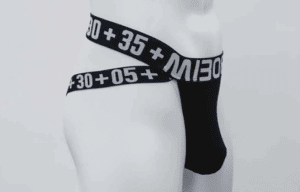The Best Laundry Detergent for Sensitive Skin
-
 By
Sophia Grant
By
Sophia Grant

Have you ever put on a freshly cleaned shirt only to find yourself with itchy, irritated skin?
The culprit may be your laundry detergent. This isn’t surprising when you consider the amount of harsh chemicals that are in the product.
Fortunately, sensitive skin laundry detergent does exist. How are they different from a traditional detergent?
They’re typically free of dyes, fragrances, and other chemicals, all of which can cause skin irritation.
What’s the best detergent for sensitive skin? Are there hypoallergenic laundry detergents? How effective are they for tough stains?
For the answers, be sure to keep reading. We’ll be going over some of the best laundry detergent options for those with sensitive skin below.
Table of Contents
ToggleImportance of Choosing the Right Laundry Detergent
Skin sensitivity can be a complex issue. For those with sensitive skin, daily struggles can include eczema or psoriasis flare-ups.
For others, they may experience allergic reactions to certain harsh chemicals.

For example, liquid detergents can trigger an irritation for people with sensitive skin.
This reaction might not be obvious at first glance because our clothes touch every inch of our bodies.
However, when you wear clothing washed in a harsh laundry detergent, your whole body is exposed to those potentially irritating chemicals.
The Need for Safe Laundry Solutions
Choosing the right laundry detergent is essential if you have delicate skin.
For example, the National Psoriasis Foundation recommends Hammer Sensitive Skin Detergent, which is free of artificial fragrances and dyes—common culprits known for causing unwanted skin reactions.
Avoiding Common Irritants in Detergents
Other ingredients such as optical brighteners and fabric softeners can also irritate skin.
By choosing a detergent free of these elements, you’re making a proactive choice for your skin’s health.
For example, most baby laundry detergent products are free of these chemicals.
Identifying Potential Irritants in Laundry Detergents
The Role of Fragrances in Skin Irritations
Fragrances top the list as one of the most common culprits behind skin allergies.

These seemingly innocent scent enhancers often hide an array of harsh and irritating chemicals that don’t play well with sensitive skin.
But it’s not just fragrances; other harmful ingredients lurking on your detergent’s ingredient list could also pose a threat.
For example, some cleaning agents in laundry soap may exacerbate irritation by disrupting your skin’s natural pH balance.
If you’ve ever felt itchiness after putting on freshly laundered clothes, these irritants might be why.
They’re tricky too – they tend not to rinse out completely during washing cycles, meaning they stick around on your clothes long after leaving the wash drum.
This scenario isn’t something you need to live with though.
Benefits of Fragrance-Free and Hypoallergenic Detergents for Sensitive Skin
For those with sensitive skin, laundry presents more than just a challenge to remove tough stains.
This is where fragrance-free and hypoallergenic ingredients come in; they are less likely to irritate your skin because they’re free from common triggers like perfumes and dyes.
Hypoallergenic Ingredients Keep Your Skin Happy

Hypoallergenic formulas are an excellent choice as they typically exclude allergens that might cause flare-ups in people with sensitive skin conditions.
For example, our hypoallergenic ACTIVE detergent sheets avoid chemicals such as optical brighteners that could potentially irritate delicate skin.
Plus these sheets are not only good for you but also kinder on the environment.
Note: Always remember this advice isn’t one-size-fits-all since everyone’s sensitivity levels vary significantly.
So start small when trying out new products until you find what works best for your skin.
Exploring Plant-Based Ingredients in Laundry Detergents
Laundry detergents made with plant-based ingredients, like USDA Certified Biobased Products, are becoming more popular. But why?
One reason is they’re gentler on sensitive skin than their chemical-laden counterparts.
The power of plants goes beyond being kind to our bodies though; these products also show respect for Mother Earth.
Using biodegradable elements means less harm to aquatic life when those suds go down the drain.
Besides cleaning clothes effectively without harsh chemicals, using a plant-based product can give you peace of mind knowing you’re making an environmentally friendly choice.
After all, who doesn’t want cleaner clothes and a cleaner planet?
Dermatologist-Recommended Products for Sensitive Skin
Choosing a laundry detergent suitable for sensitive skin can feel like navigating through a minefield. But fear not, we have the solutions.
Using ACTIVE Laundry Detergent Sheets
ACTIVE Laundry Detergent Sheets are eco-friendly and made from plant-based ingredients, which makes them perfect if you’ve got sensitivity issues.
Step 1: Determine the Number of Sheets

For small to medium loads, use half a strip. For larger loads, use one full strip.
Step 2: Add It to the Washer

Add the laundry detergent sheet into the detergent dispenser tray if you have a front-loading machine, or into the drum directly if you have a top-loading machine.
Step 3: Add Your Laundry

Place your laundry in the washing machine, using laundry bags if necessary, and run a wash cycle as normal.
Supply:
- ACTIVE Laundry Detergent Sheets
- Laundry bags (optional)
The detergent sheets will automatically dissolve in both cold and hot water.
Using ACTIVE Laundry Detergent
ACTIVE Laundry Detergent features a hypoallergenic, plant-based formula that makes it ideal for those with sensitive skin. It’s also dye-free and fragrance-free and will effectively remove odors and stains.
Supplies:
- ACTIVE Laundry Detergent
- Laundry bags (optional)
Step 1:
Place your laundry in the washing machine, using mesh bags, if necessary.

Step 2:
Add one scoop (or more, depending on your load size) of ACTIVE Laundry Detergent directly to the drum.

Step 3:
Run a wash cycle as normal.

You can also use ACTIVE Detergent to pre-treat your clothes. Simply dissolve the powder in water and let your garments soak.
ACTIVE Laundry Detergent
Powerful enough to clean heavily soiled laundry, but gentle on skin.

15% Off Your Order on Amazon
×Click below to reveal the 15% off coupon for your entire ACTIVE purchase on Amazon.com
Reviewing Top Laundry Detergents for Sensitive Skin
Finding a laundry detergent that won’t aggravate delicate skin can be a difficult challenge. So, we’ve analyzed top-rated detergents and found some winners.
Eco-Friendly Options in Laundry Detergents
ACTIVE Laundry Detergent and Seventh Generation Free Clear Detergent are both free from artificial fragrances and harsh cleaning agents, which often cause irritation.
The Arm & Hammer Sensitive Skin Free & Clear Liquid Laundry Detergent is another great choice on a budget.
This clear liquid uses baking soda to remove stains effectively while being gentle on the skin.
All these brands take an extra step by packing their products in recycled plastic containers, adding more value to their eco-friendliness.
Are all sensitive laundry detergents suitable for those with sensitive skin? The answer is no. After all, everyone has different sensitivities.
EPA Safer Choice Program Certification
Beyond dermatologists’ recommendations, there are certified products as well. The EPA’s “Safer Choice” program certifies items that meet rigorous standards for human safety and environmental protection.
Effective Use of Laundry Detergents – Some Tips

Washing machines aren’t just a cleaning tool, they’re also your defense against skin irritation.
The secret lies in selecting detergents that are gentle on your skin and yet effective in stain removal. But how do we achieve this balance?
Picking the Right Products
It’s best to avoid fabric softeners.
While they give clothes that fresh scent and soft feel, some might irritate sensitive skin.
Given that, opting for fragrance-free versions or skipping them altogether may be helpful.
Dosage Matters
You don’t need to use more detergent than necessary – too much could leave residue on your clothes which might cause irritation.
This is true even if you’re dealing with stubborn stains.
Always follow instructions provided by the manufacturer regarding dosage; less can often be more when dealing with sensitive skin conditions.
Clean Your Machine Regularly
Last but not least: keep an eye on your high-efficiency washing machine, making sure to clean it regularly. For the best results, we recommend using ACTIVE Washing Machine Cleaner.
Supplies:
- ACTIVE Washing Machine Cleaner
- Damp cloth

Step 1:
Make sure the washing machine is empty and add one ACTIVE Washing Machine Cleaner Tablet directly into the drum.

Step 2:
Run a normal wash cycle with hot water. You can also use a ‘clean washer’ setting, if your machine has one.

Step 3:
Once the cycle is finished, wipe away any remaining residue from the drum using a damp cloth.
The Best Detergent for Sensitive Skin – FAQs
What is the highest-rated laundry detergent for sensitive skin?
ACTIVE Laundry Detergent Sheets and ACTIVE Detergent top the list.
They both feature a concentrated formula that’s hypoallergenic, plant-based, and will leave your clothes smelling fresh.
Not only that but they’re also great for removing tough stains.
What is the number-one dermatologist-recommended laundry detergent?
ACTIVE Detergent is highly recommended by dermatologists because it’s dye-free and contains fewer irritants than most other detergents.
What laundry detergent can I use for very sensitive skin?
You can use ACTIVE Detergent. It’s a trusted brand that offers effective stain removal while being kind to your skin.
Laundry detergents that are marketed for babies (e.g. Attitude Baby Laundry Detergent) also tend to be gentle on the skin.
What laundry detergent is most gentle when washing clothes?
ACTIVE Detergent Sheets and ACTIVE Detergent Powder are both exceptionally gentle on fabrics, making them an excellent choice if you need to protect delicate clothing items.
SAVE
15% off
Your Next ACTIVE
Purchase on Amazon
15% Off Your Order on Amazon
×Click below to reveal the 15% off coupon for your entire ACTIVE purchase on Amazon.com
Limited Time Offer





